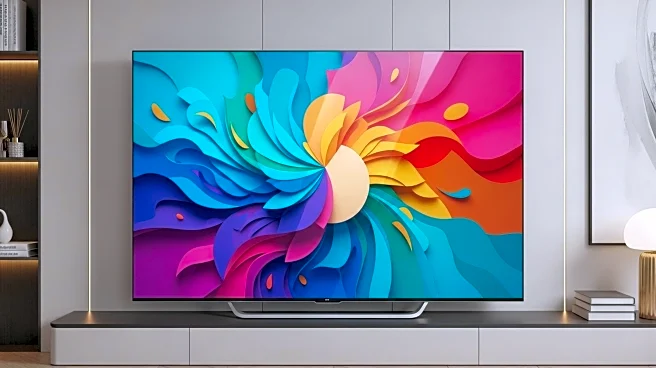What's Happening?
The audio advertising industry is undergoing a significant transformation as it seeks to align more closely with real-time consumer expectations. Traditionally, audio advertising has been slower to adapt due to the complexities of production involving studios, voice talent, and approval cycles. However, with the rise of digital audio consumption, there is a growing demand for ads that are timely and contextually relevant. According to projections, U.S. programmatic digital audio ad spending is expected to reach $2.26 billion this year, marking a nearly 20% increase from the previous year. This growth is part of a broader trend in the Americas, where the digital audio market is anticipated to expand from $7.05 billion in 2024 to $8.5 billion by 2028. The industry is now exploring innovations such as AI-powered Dynamic Creatives and Synthetic Voice technology, which allow for the rapid generation of natural-sounding voices and adaptable background tracks.
Why It's Important?
The shift towards real-time audio advertising is crucial as it addresses the increasing demand for personalized and relevant content. As consumers' listening habits evolve, advertisers are under pressure to deliver messages that resonate with audiences in the moment. This transformation is not just about technological advancements but also about adopting a new mindset that views creative content as dynamic and adaptable. Brands that successfully implement these changes can enhance engagement and maintain relevance in a competitive market. The ability to tailor messages to specific contexts, such as weather or location, can significantly improve the effectiveness of audio campaigns, making them more engaging and impactful.
What's Next?
As the audio advertising industry continues to evolve, brands are expected to increasingly adopt tools that allow for real-time adaptation of their campaigns. This includes testing and learning from new technologies to ensure that their messages remain relevant and engaging. The industry faces a critical decision: whether to continue relying on static messages or to embrace a more dynamic approach that aligns with the real-time nature of consumer behavior. By doing so, brands can not only stay relevant but also help shape the future of audio advertising, turning it into a living, fluid system rather than a static asset.
Beyond the Headlines
The move towards real-time audio advertising raises important questions about authenticity and the role of technology in creative processes. While AI and synthetic voices offer new possibilities, the challenge lies in ensuring that these tools enhance rather than detract from the authenticity of the message. The industry must navigate these ethical considerations while striving to create content that feels genuine and connected to the listener's world. This evolution also reflects broader cultural shifts towards immediacy and personalization in media consumption, highlighting the need for advertisers to continuously adapt to changing consumer expectations.










